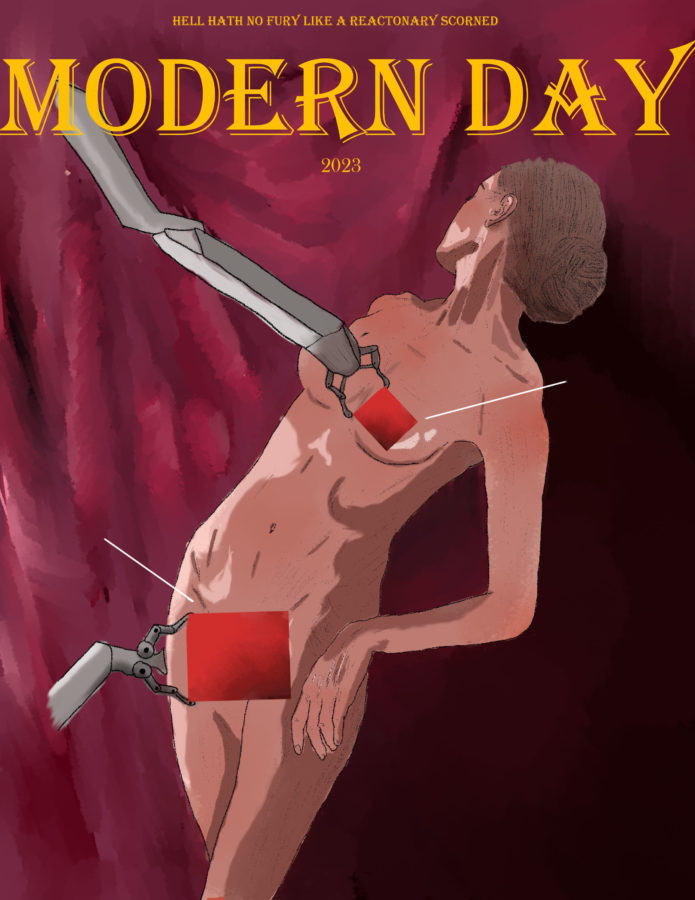Modern Day Feminism
Essay & Opinion | Is there a ‘wrong’ way to be feminist, and would this result in excluding marginalized groups?
Illustration of Modern Day Feminism
The academic definition of feminism is simply egalitarianism: the doctrine that all people are equal and deserve equal rights and opportunities. The movement demands equality for both men and women.
However, some hold a more rigid and reactionary understanding of feminism and approach the movement more conservatively or shallowly. These separate movements fail to work towards liberation for all women in any meaningful capacity.
This leads to many begging the question: is there a ‘wrong’ way to be feminist, and would this result in excluding marginalized groups?
3 Categories of Counterintuitive Feminism
1. Trans-Exclusionary Radical Feminist
TERFs exclude trans women from women’s spaces while utilizing the shield of feminism to partake in hostile activism against the transgender community. This canal of feminism is built based on transphobic ideals and a conservative understanding of gender.
Social conditioning resulting from the ideals of a rigid binary has reinforced trans-exclusionary positions as normative positions. This can be observed in 2023 alone where there have already been over 500 anti-trans bills debated in varying states within the US.
Excluding trans women from the feminist movement is a violent act of transphobia that ignores the growing systemic violence this marginalized group faces. Hate crimes against the transgender community have only grown in the last ten years. So much so that “the American Medical Association recently declared homicides of transgender individuals an epidemic.”
It is impossible to simplify the challenges this marginalized community faces as they struggle to receive basic human rights like legal recognition, health care, or the right to publicly exist. The TERF movement does nothing to uplift or stay true to the fundamental goal of feminism — gender equality.
2. Sex Worker-Exclusionary Radical Feminist
SWERFs are activists who exclude sex workers from the feminist movement. This group is uniquely positioned in the movement as sex work faces complex legal complications.
Sex work abolitionists often come from a place of wanting to uphold “female modesty” and look down on women in the industry. However, despite conservative values, the movement still holds admirable concern over safety and the risk of trafficking.
Sex work is a highly stigmatized industry where often no one advocates for their best interest, struggling to receive adequate banking as a result. Women in this sector of labor have no legal recourse as a result of criminalization and stigmatization.
The abolitionist approach, however, doesn’t target the problem in a meaningful capacity as it only further aims to criminalize marginalized groups of women. This results in the problem growing instead of resolving.
Ensuring a safer working environment and allowing no further coercion within consensual adult sex work means advocating for labor protections.
However, implementing any kind of workplace protection cannot happen when so many subscribe to the idea that women in the industry are not valid participants of labor and believe eradication is the only solution.
Decriminalization of sex work maximizes legal protection and opens the industry to receive basic human rights like justice and health care that “can help empower this traditionally marginalized population.”
3. Capitalist Liberal Feminism
Capitalist Liberal Feminists heavily subscribe to the “aesthetics” of feminism while avoiding taking any meaningful action.
This form of activism takes form when large corporations commercialize feminism and present strong female figures in advertising and marketing. This continues alongside contradictory practices like relying on oversea abuse that exploits women and young girls.
Reactionary Male Activism and Internalized Misogyny
Common reactionary talking points surround the idea that the inherit natural hierarchy between women and men has somehow been bastardized in modernity. This viewpoint is most commonly espoused by conservative think tanks that ironically use emancipatory language to sanitize repackaged conservative propaganda.
Right-wing commentators like Ben Shapiro and Jordan Peterson are good examples of this kind of misogyny. Both men hold narrow definitions of societal constructs like masculinity and feminism. Their signature tactic relies on deconstructing radical individualism and describing it to their audience as if they are saying something completely different.
It is a tenuous effort to argue that men are somehow being systematically eliminated from participating in sectors of society as a result of feminism when this is simply a reactionary take that pulls attention away from the real goals of the feminist movement — equality amongst both men and women.
While this reactionary form of male activism is inherently reactionary, this does not erase the very real issues men face and areas of concern regarding high rates of suicide, sexual assault, and custody battle loss.
Normalization of an Unjustifiable Patriarchy
Both men and women have faced negative consequences as a result of unjustifiable patriarchy.
For years, women have been objectified and hurt by the very systems that are meant to protect them. Additionally, men often lean towards emotion suppression instead of examining them in a healthy way as a direct consequence of the rigid societal expectations and the standards placed on them.
Patriarchal attitude differences over the last few centuries have systematically evolved around the remaining stagnant patriarchy. Both systemic and underlying material conditions of culture encircling the conversation of feminism have made one thing clear — the modern-day approach to gender equality has grown increasingly exclusionary.
Egalitarianism cannot be reached if marginalized groups are systemically excluded from the conversation of equality. These inherently reactionary fissures of activism fail to defend the voiceless and stray from the true goal of feminism.
In the demand for equality of men and women, feminism was meant to be inclusionary.

Hannah Monet Medellin is a twelfth grade student at Golden Valley High School. She is active in her school by being a staff writer for the new Grizzly Gazette, and a peer counselor at the GROWL center. She began peer counseling in the eleventh grade and has worked her way to the honors peer counseling. Hannah is an avid reader and plant owner. For most of her life she found herself lost in the thoughts of others that shared it through ink on a paper. When she was fourteen she began to fall back into her love for plants and has plans to have her own greenhouse someday.
She has always had a love for reading and writing and can’t wait to participate in reading everyone's articles and sharing her own. Showing the creativity of others is her goal. If there is any short story, poems or art that wants to be submitted she’d love to share it in her articles!
Isela Fisk is a staff writer for the campus news division of Golden Valleys' student newspaper. While her hyper-fixations range from animal crossing to multimedia design, falling into the niche rabbit holes of pop culture is arguably her special skill. As a senior, she was ecstatic to participate in her passion for journalism during her last year of high school. Her visionary perspectives have earned her recognition in the past for poetry and short story events. She firmly believes that her duty as a community-focused writer is to commit to truthful and thorough reporting as she grows inspiration from covering public issues.
Since age 14, becoming a contributor to the well-being of her community has always been a priority, donating her time to assist food pantries and homeless shelters. To shed light is to make a difference. This is the power journalism had always had for her; recognizing it when she understood journalists were the link between media and the public.
“It’s...





















